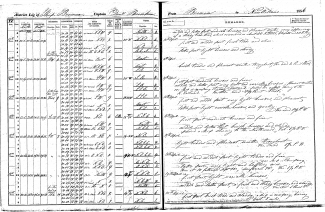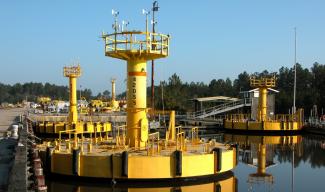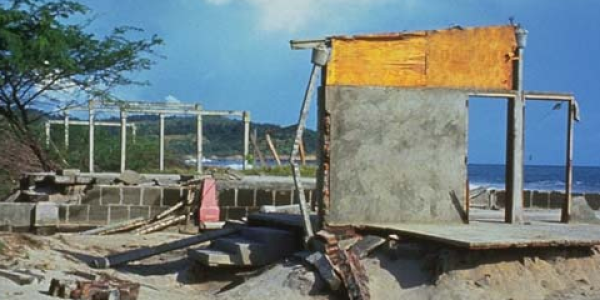
Less than a century ago, Jack and Jill weren’t the only ones filling buckets with water. Scientists and sailors were using actual wooden buckets to measure sea surface temperatures well into the mid-20th century. Because of their efforts, we can better understand Earth’s climate and how current events fit into longer-term historical context.
Sea surface temperature readings are usually taken in the top meter or so. And, because the ocean covers about 70 percent of Earth’s surface, these temperatures help us understand how the ocean influences the global environment. Scientists use these measurements for everything from monitoring ecosystems to predicting El Niño and La Niña events.
Measuring Sea Surface Temperature with Buckets
To measure sea surface temperatures, sailors would lower buckets over the sides of their ships to collect a sample of seawater. Then, they would hoist the bucket back up to the ship deck, and record the temperature reading in the ship’s logbook.
As you can probably imagine, these measurements weren’t always the most accurate as the temperature of the water in the bucket could be cooled by evaporation or warmed by the sun as the bucket was hauled back on board and while the thermometer was reaching a stable reading. Overall the cooling effect of evaporation dominates, and bucket measurements are adjusted to account for these effects. Almost all sea surface temperature measurements were made using buckets until World War II, when it became more common to report the temperature of the seawater pumped aboard to cool the engines. As late as the late 1970s, bucket use contributed to nearly half of all sea surface temperature measurements.
Buckets Become a Thing of the Past
Fortunately, as time progressed so did technology, allowing scientists to develop more accurate methods for measuring sea surface temperatures. Today, buoys across the ocean automatically report measurements from their sensors. These measurements are beamed to satellites for automated and immediate data distribution.
The majority of the world’s buoys are known as “drifting buoys,” which are usually attached to a drogue, a device that reduces speed or improves stability. The mechanism allows the buoys to—you guessed it—drift along with the ocean currents. Moored buoys, on the other hand, are anchored at fixed locations typically along coastlines as well as in the tropical Pacific and Indian Oceans. Whether they are drifting or moored, buoys make significant contributions to our ability to consistently monitor the ocean in remote areas.
NOAA's National Data Buoy Center maintains a large network of coastal buoys in U.S. waters. These buoys range in size from around 5 feet to 40 feet in diameter! Buoys aren’t just found in U.S. coastal waters. The National Data Buoy Center also collaborates with international agencies to monitor sea surface temperatures across the globe.
Profiling Argo Floats are a recent addition to ocean measurement, including temperature. The floats are distributed over the global ocean to measure temperature and salinity in the upper 2,000 meters. These floats drift with the ocean currents and move up and down between the surface and a mid-water level, measuring temperature, salinity, and other elements along the way. Once on the surface, they transmit the measured data to satellites and then back to land stations.
The Importance of Sea Surface Temperatures
Sea surface temperatures can affect many things from the formation of tropical cyclones to where and how much precipitation falls over land. Perhaps most importantly, these temperatures affect the behavior of Earth’s atmosphere, making monitoring them extremely important. Changes in sea surface temperature can also impact biological processes and the health of marine ecosystems such as coral reefs. Persistent anomalous warming, called Marine Heatwaves, can cause coral reef bleaching and death, affecting other life that rely on the coral reefs.
Collaborating with the international community, NCEI continues to aid in the effort to monitor and archive sea surface temperatures from around the world.





